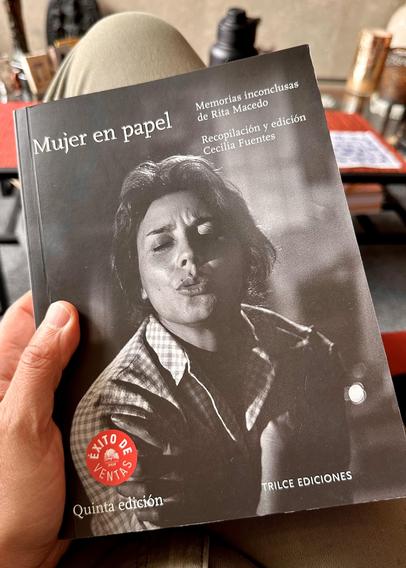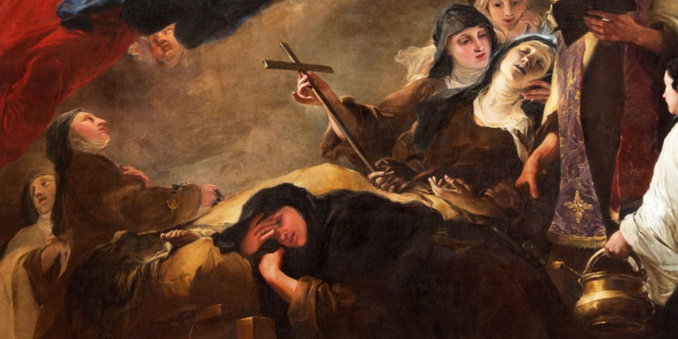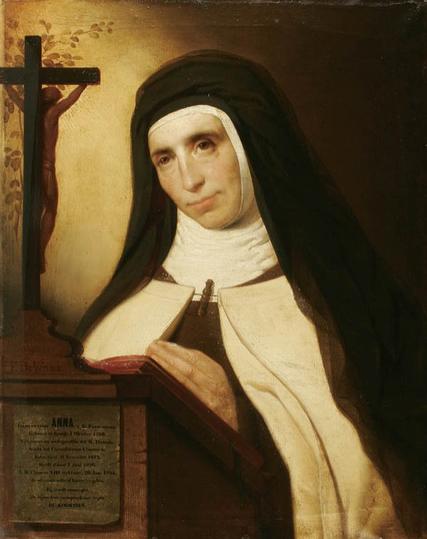Quote of the day, 3 October: The last days of St. Teresa
The last days of Saint Teresa
As told by Blessed Anne of St. Bartholomew
The day after our arrival at Alba [i.e. 21 September 1582], she was so greatly exhausted that the physicians feared, for the moment, that she could not live: a great sacrifice for me, the greater because I must remain in this world.
For, aside from the love I bore her and that she had for me, I had another great consolation in her company: almost continually I saw Jesus Christ in her soul and the manner in which He was united to it, as if it was his heaven. This knowledge filled me with the deep reverence one should feel in the presence of God.
Truly it was heavenly to serve her, and the greatest torture was to see her suffer.
Blessed Anne of St. Bartholomew writes about the final illness of St. Teresa: “Truly it was heavenly to serve her, and the greatest torture was to see her suffer.”
I fell sick with a fever the very eve of the day when she was to leave for the visitation of her monasteries. I was not at all in a condition to undertake the journey.
She said to me: “Do not be disturbed, my child! I shall leave orders here to send you to me as soon as the fever leaves you.”
But at midnight, when she sent a religious to ask how I was, I found that I was free from fever.
She rose from her bed, came to me, and said: “It is true, my daughter, you no longer have any fever; we can easily undertake the journey. I hope it may be so, and I will recommend the matter to God.”
And so it was; we left in the morning.
During the five days preceding her death at Alba, I was more dead than alive. Two days before her death, she said to me once when we were alone: “My child, the hour of my death has come.”
Blessed Anne of St. Bartholomew remembers the death of St. Teresa: Two days before her death, she said to me once when we were alone, “My child, the hour of my death has come.”
This pierced my heart more and more. I did not leave her for a moment. I begged the religious to bring me what was necessary for her. I gave it to her. It was a consolation to her for me to do so.
Blessed Anne of St. Bartholomew
Chapter X, Last Moments of Saint Teresa
Portrait of Blessed Anne of Saint Bartholomew by France de Wilde (1917). Image credit: Wikimedia Commons (Public domain) In their translation for ICS Publications, Father Kieran Kavanagh and Otilio Rodriguez note that Fray Antonio de Jesús ordered St. Teresa to travel from Medina to Alba de Tormes to settle difficulties in the community. She and Blessed Anne of St. Bartholomew arrived the evening of 20 September.
Biographer William Thomas Walsh offers further detail. The journey was exhausting with little food. Upon arrival, the prioress was so alarmed by Teresa’s condition that she ordered her own foundress to bed. Teresa obeyed.
Walsh continues: “Next morning she got up, walked about the convent, heard Mass, received Holy Communion with great devotion, and took a severe discipline. Thus she went on, getting up and resting in turn, attending Mass each day, until the Feast of Saint Michael, September 29. Then, after Mass, she had a hemorrhage which left her so weak that she had to be helped back into bed in the infirmary. She had asked to be placed there so that she could look through a certain window and see the priest saying Mass in the chapel beyond.”
Teresa spent the first night of October in prayer, and at dawn asked to have Fray Antonio of Jesus hear her confession.
On October 3, the eve of Saint Francis, at about five o’clock, she asked for Viaticum. The nuns dressed her in veil and white choir mantle and lighted tapers in the infirmary. While they waited for the priest, Teresa spoke:
“Hijas mías y señoras mías, for the love of God I beg that you will take great care with the keeping of the Rule and Constitutions, and pay no attention to the bad example that this wicked nun has given you, and pardon me for it.”
When the priest arrived with the Blessed Sacrament, she raised herself without help. Her face became beautiful and illuminated, much younger than her age. Ribera writes that “clasping her hands, full of joy, this swan of utter whiteness began to sing at the end of her life more sweetly than they had ever heard her sing and spoke lofty things, amorous and sweet.”
She said: “Oh my Lord and my Spouse, now the desired hour is come. Now it is time for us to go. Señor mío, now is the time to set forth, may it be very soon, and may Your most holy will be accomplished! Now the hour has come for me to leave this exile, and my soul rejoices at one with you for what I have so desired!”
Anne of St. Bartholomew, M; Bouix, M 1917, Autobiography of the Blessed Mother Anne of Saint Bartholomew, inseparable companion of Saint Teresa, and foundress of the Carmels of Pontoise, Tours and Antwerp, translated from the French by Michael, M A, H. S. Collins Printing Co., Saint Louis.
Thomas Walsh. W 1987, St Teresa of Avila: A Biography, TAN Books, Charlotte.
Featured image: Giovanni Segala, The Death of St. Teresa of Avila, 1696, oil on canvas, Church of San Pietro in Oliveto, Brescia, Italy. One of six lunettes on Teresian themes, restored for the fifth centenary of St. Teresa’s birth in 2015. Photo by Renáta Sedmáková © Adobe Stock.
#AlbaDeTormes #biography #BlessedAnneOfStBartholomew #deathAndDying #StTeresaOfAvila











